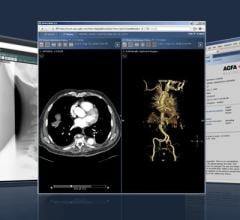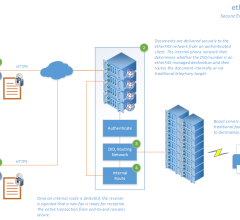Watching 2021 Unfold

Getty Images
Slowly, we are seeing our world come back into focus. The pandemic threw everyone a curve ball that most didn’t see coming, at least at the magnitude that it hit. The year brought about a lot of change — which built some new models for business operation, and opened up avenues of discussion for others. Here are a few areas where we have seen significant change over the past year:
Technology. As artificial intelligence is increasingly integrated into real-life workflows, attitudes about AI have changed. AI is no longer a science project or a 101-level discussion on how the technology can differentiate a dog from a blueberry muffin. It has become a serious product discussion as AI applications are integrated into imaging systems and PACS software to assist in faster and more accurate imaging. New products have been released that can offer a preliminary diagnosis, either to red-flag critical findings and send the exam to the top of a reading list, or serve as a second set of eyes to offer a diagnosis or catch incidental findings.
The work environment. Telemedicine and teleradiology adoption exploded in 2020 due to COVID-19 and it is likely here to stay. It will permanently alter how healthcare operates, provided the Centers for Medicare and Medicaid Service (CMS) grants telemedicine visits permanent reimbursable status. Even before the pandemic hit there was a large movement toward enterprise imaging systems that allowed remote access from anywhere, and the ability to share reports and images across the enterprise for peer review and to referring physicians. The pandemic has only increased this demand for enterprise imaging systems.
Healthcare providers like Northwell Health in New York State realized that there was still a need for inpatient radiology, however there was also concern that being in the hospital environment was putting radiologists at risk. Northwell, which typically has over 200 radiologists interpreting more than 2 million medical scans a year, decided to move many of its radiologists to read from home.
Enabling radiologists to work remotely isn’t easy, and the process needed to take into consideration security, efficiency and quality. Facilities needed to figure out a workflow that went from state-of-the-art reading rooms to home offices. Building the technical infrastructure to support remote workstations securely while guaranteeing efficiency, quality and performance for the radiologists present proved to be another hurdle, however successful workarounds were found.
Collaboration. Transitioning to a fully remote setup can also have a significant impact on collaboration, which is critical for patients when responsibilities for their care are shared between physicians. This includes the ability to review images seamlessly to provide a second opinion or to plan clinical treatments for optimum healthcare outcomes. Having a system that supports tools such as chat, live screen-sharing and other communications is very important for effective collaboration especially for radiologists in a remote working environment.
Facility operations. Every single healthcare facility was forced to figure out a new way to do business. This past year opened the eyes of radiologists and vendors to wide disparities in healthcare and many areas where innovation is needed. Some sobering statistics were shared during a recent Philips roundtable regarding the challenges that radiology currently faces:
- Radiology exams with advanced modalities have increased by 43 percent.
- Health data is expected to reach more than 2,000 exabytes in 2020.
- Imaging staff think 23 percent of their work is inefficient and would be better if automated.
- Unnecessary, sub-optimal and repeat imaging cost as much as $12B+ annually.
- There is a growing global shortage of radiologists and other clinicians, which will widen further as growing populations continue to age.
Networking. Radiology was coming off of its busiest season of the year when suddenly everything just stopped. Virtual events quickly took center stage, and while it was nice to attend conferences at our desks with slippers on, the element of live interaction was missing.
In a survey conducted last year in partnership with Paragon Consulting Partners, the resounding reason for not attending RSNA20 across all respondents was the perception that the virtual format would not be able to sufficiently replace an in-person experience (79%), and subsequently the lack of social networking opportunities (29%) and perceived value for investment (25%).
Many large industry conferences plan to make a physical comeback this year, including HIMSS in August, ASTRO in October and RSNA in November. However, there still will be virtual elements to these conferences. Will shows of the future become hybrid events? How will international presence be affected? We will soon find out.
PHOTO GALLERY: How COVID-19 Appears on Medical Imaging
VIDEO: How to Image COVID-19 and Radiological Presentations of the Virus — Interview with Margarita Revzin, M.D.
Find more radiology related COVID news and videos



 May 17, 2024
May 17, 2024 








